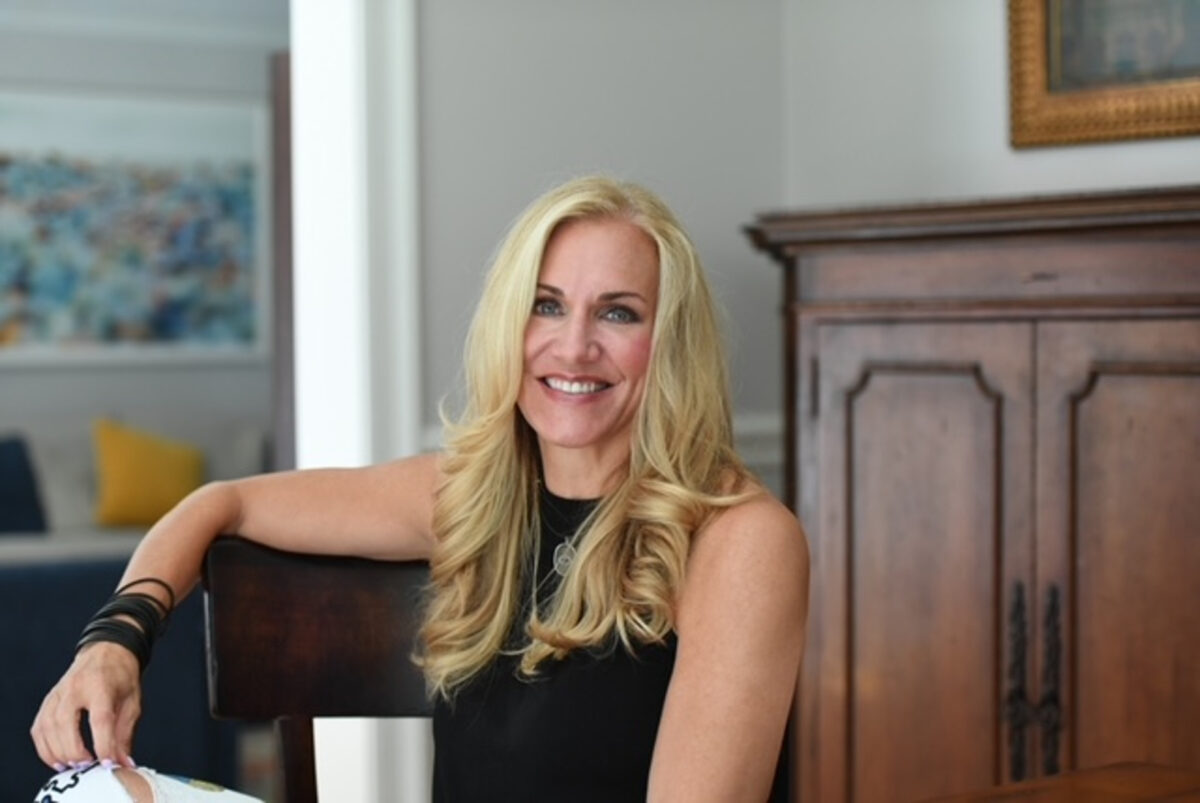
Most management executives do everything they can to avoid adversity. Award-winning marketer Julie Roehm has built her career around it. “I like broken toys,” she said when speaking about the types of projects she’s drawn to. “I’m a transformation, turnaround, sub-optimization opportunity sort of girl. That’s just where I thrive.”
At the recent GDS CMO Summit, Julie Roehm shared her expertise on executing successful transformations in the face of adversity with some of the most influential thought leaders in the industry. After 25+ years of engineering transformations at some of the world’s biggest companies, Roehm has gained a unique understanding of the internal challenges that can arise during a shift in the system. And, she has plenty of experience reacting to external shocks to the plan.
Julie Roehm’s message, which is summarized in the article below, couldn’t come at a more opportune moment. In today’s business environment, adversity is the norm. War, pandemic, inflation, AI, and other challenges are pushing companies to react and transform rapidly. As uncertainty looms, Julie Roehm shares her insight on turning adversity into opportunities for growth.
About Julie Roehm
Julie Roehm is one of the most distinguished marketers in the global business community. She has been the architect of transformational changes at several major brands, including Ford Motor Company, DaimlerChrysler, and SAP. Her most notable transformation was the resurrection of the Dodge brand at Chrysler. Her “Grab Life by the Horns” campaign earned her a place in the Advertising Hall of Fame and the Automotive Hall of Fame—as well as a Marketer of the Year award by BrandWeek.
Since then, she has held positions such as CMO, CEO, Chief Experience Officer, and Chief Storyteller. And, she has accumulated dozens more accolades, including the Distinguished Alumni Award from the University of Chicago’s Booth School of Business. Julie Roehm was recently named among the Top 100 Marketers of 2023 by ONCON ICON.
Today, Roehm serves as a member and Director of multiple Advisory Boards, and she is seeking new opportunities with projects in need of her transformational strategies. On her podcast, The Conversational, she speaks with other thought leaders in the business community on the adversity in their lives that challenged them to transform and succeed.
Takeaways from Julie Roehm’s Talk at the GDS CMO Summit
Expect the Unexpected
One of the most important ways to deal with adversity during times of change is to admit that the unexpected is inherent in the transformation process. Executives often become fixated on static goals at the end of the road, but transformation is dynamic by nature. And, as Julie Roehm reminds her audience, transformations don’t happen quickly, especially for large organizations.
“Transformation is not an overnight scenario,” she says. “It is a 3–5 year journey in the majority of instances, sometimes more than 5 years,” she said. Just imagine how much has changed over the past 5 years. The original aims of a transformation will inevitably shift, but this isn’t a bad thing. If a company manages its transformation properly, it will be ready to react to unexpected changes with agility. However, this depends on the degree of planning and change management implemented throughout the company.
At the scale of large corporations, a transformation requires careful planning, a shift in management strategy, and lots of time. Julie Roehm recommends that executives break their long-term strategies into manageable short-term “chunks” that are more easily achievable, measurable, and adaptable.
Transformation as a Collective Endeavor
Julie Roehm was firm in her belief that a successful transformation is not possible unless everyone in the organization is on board. She says, “Nothing happens without the entire executive leadership team, C-suite, holding hands and aligning on the strategy.”
While alignment in the boardroom is crucial, a transformation strategy should also reverberate across the entire organization. “You need to have everybody trusting one another and believing in this to enable the transformation to actually take place,” she elaborated.
As a result of her experience working for companies that she loved—along with all the others, Julie Roehm has learned that company culture is a major driver of both positive change and adversity during a transformation. She often references a well-known saying in management: “Culture eats strategy for breakfast.” This is especially true during a transformation. A transformation often affects culture, and if transformational goals are not shared and managed company-wide, cultural differences can create barriers to success.
Even the lowest-level, part-time employees need to be brought into the fold. In fact, these are some of the most important people in the organization because they often interact directly with the customer.
Roehm recalls leading a major retail brand as it switched from an SKU-based sales model to an experienced-based model. This required changes in company culture, which the executive board was aligned on. But those changes would not have been successful if they weren’t reflected in point-of-sale interactions at brick-and-mortar stores. Roehm took the time to personally visit stores and align staff in order to effectively diffuse the company’s aims.
This work of getting everyone to “hold hands,” as Roehm puts it, is at the core of change management—another essential part of managing adversity during a transformation.
Change Management as a Catalyst—and as Damage Control
As the momentum for transformation grows within a large organization, growing pains become inevitable. Internally, most of these growing pains happen as a result of a lack of alignment around the company’s transformational goals.
Alignment doesn’t happen as a result of a single meeting. It’s built around a continuous retooling of culture and operations, and it requires careful management. Leadership can easily get tied up in managing change at a macro level while losing focus on the individual employees and teams responsible for realizing that change. Executives must make a conscious effort to guide the process and to keep employees aligned with the overarching goals.
Julie Roehm emphasizes the importance of communicating effectively and designating change advocates in each department to resolve conflicts and misunderstandings as they arise. This involves smart delegation by the leadership, but it starts with executives acting as role models for the changes they are propagating. C-suite managers must work closely with departments to reassure employees and deal with misunderstandings among mid-level and low-level management.
When change management is properly implemented, it enables companies to achieve their transformational goals much more easily. Aligning an entire organization around a transformative goal may even improve the board’s original aims. On the other hand, poor change management can cause a firm to become a rudderless ship, unable to achieve its original goals and or adapt to unexpected challenges.
Finding Opportunities in Adversity
Julie Roehm advised her peers to react to adversity with an open mind. Instead of abandoning the aims of the transformation and retreating back to safety, she suggests that firms maintain the course and search for “low-hanging fruit,” or simpler, short-term goals that can help propel the organization through difficult times. At worst, reaching for low-hanging fruit will result in small wins for the company. At best, it can contribute to long-term goals, helping the transformation stay aligned with the demands of changing markets.
For example, when Roehm was CMO of a large retail brand during the pandemic, the company was forced to shut down many of its 850+ retail locations. To put it lightly, this disrupted its transformational goals. However, Roehm took the opportunity to revamp the brand’s digital experiences and engineer pandemic-friendly hybrid experiences. Some of the changes she adopted included adding gamified elements to the app and giving customers the ability to communicate with local retail stores via text. Her changes drove up sales and increased the brand’s market share.
But more importantly, these short-term goals, which were exposed due to adversity, turned into major successes that are still in place at the company today. Exploring low-hanging fruit allowed the brand to understand shifting consumer behavior by adopting low-risk changes. These changes influenced and enhanced the larger transformational goals.
Final Thoughts from Julie Roehm at the GDS CMO Summit
Julie Roehm’s understanding of customer experiences has been referred to as “supernatural,” but in her presentation at the 2023 GDS CMO Summit, she demonstrated that achieving transformative goals is possible if organizations are committed to change. Companies that are willing to be bold, expect bumps along the road, and invest in company-wide change management can achieve their aims.
More urgently, Roehm warned that transformations are no longer optional for large companies. Rapidly changing consumer behavior is making these major shifts necessary. Companies that are unable to adapt will be overtaken by smaller, more agile brands delivering modern customer experiences.
One of Roehm’s primary focuses is omnichannel solutions, which she argues became incredibly important during the pandemic. Customers now expect seamless interactions between various digital and in-person channels. Many companies are adapting, but many others are struggling to implement omnichannel strategies—likely because they require transformative operational and cultural change.
Thanks to the thought leadership of Julie Roehm and the insights she provided to GDS CMO Summit attendees, more organizations will have the tools they need to enact successful transformations and remain resilient in the face of adversity.







